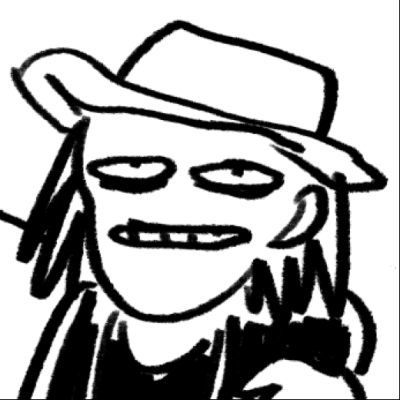Getting to Know Dark Matter
Mary Hubbert and Tien-Tien Yu
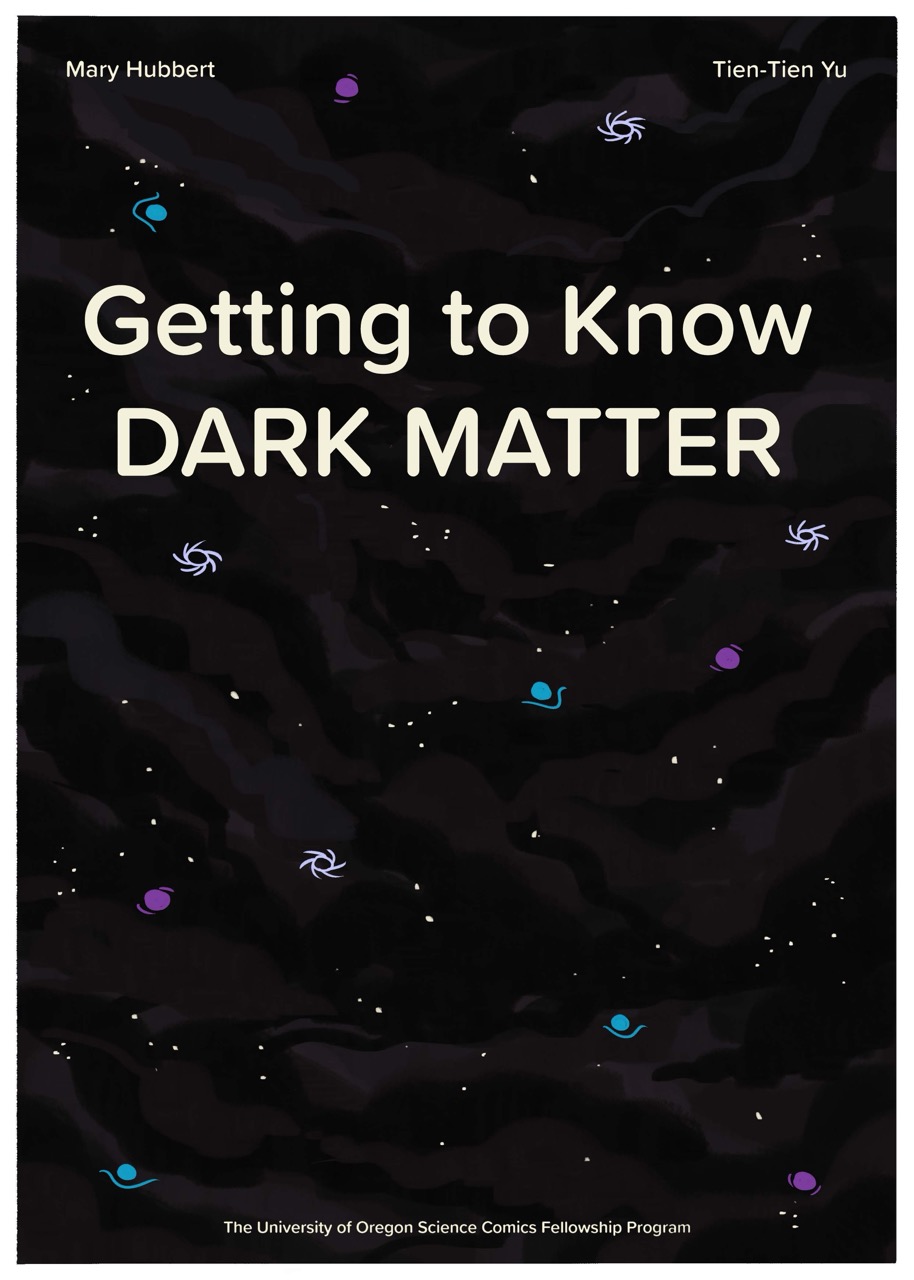
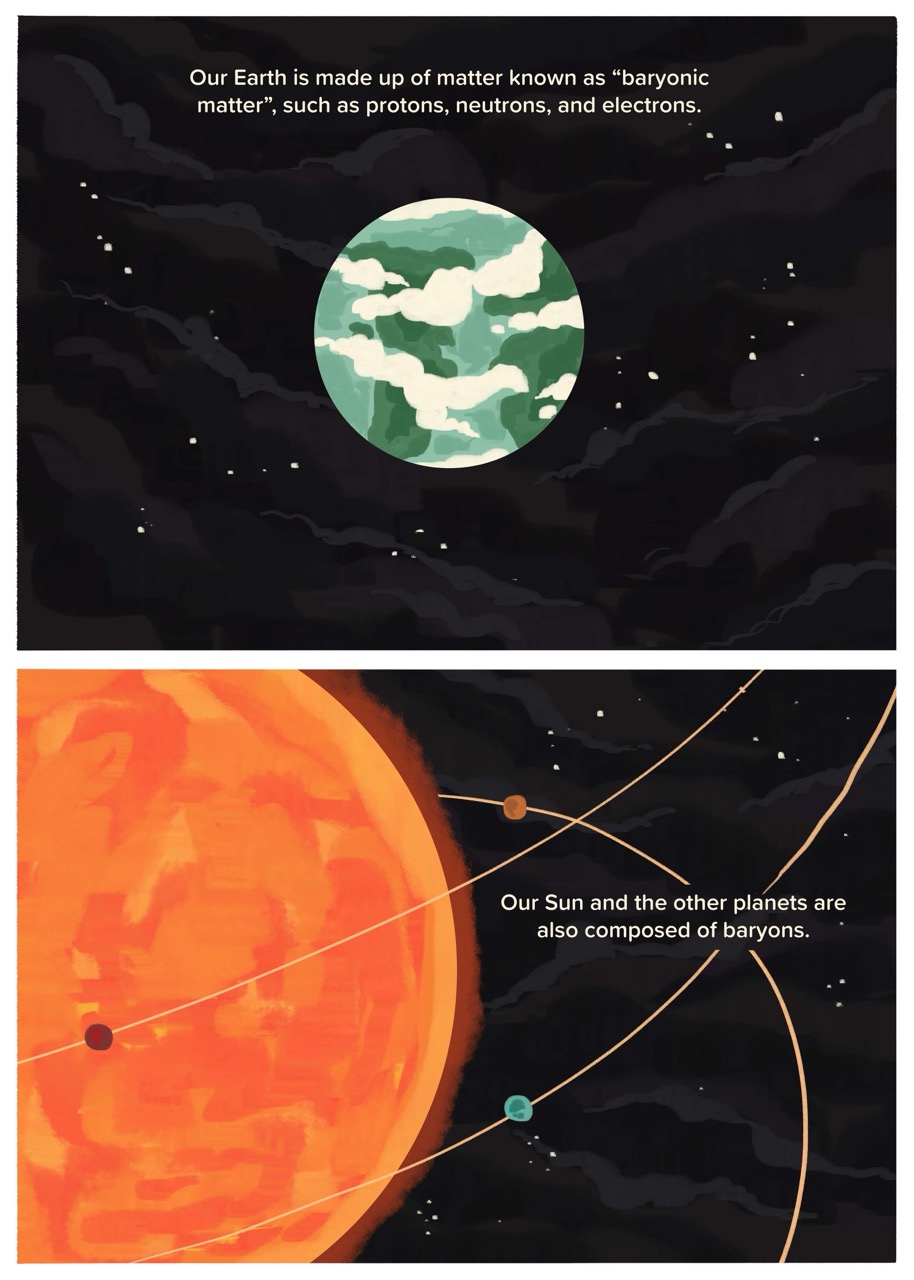
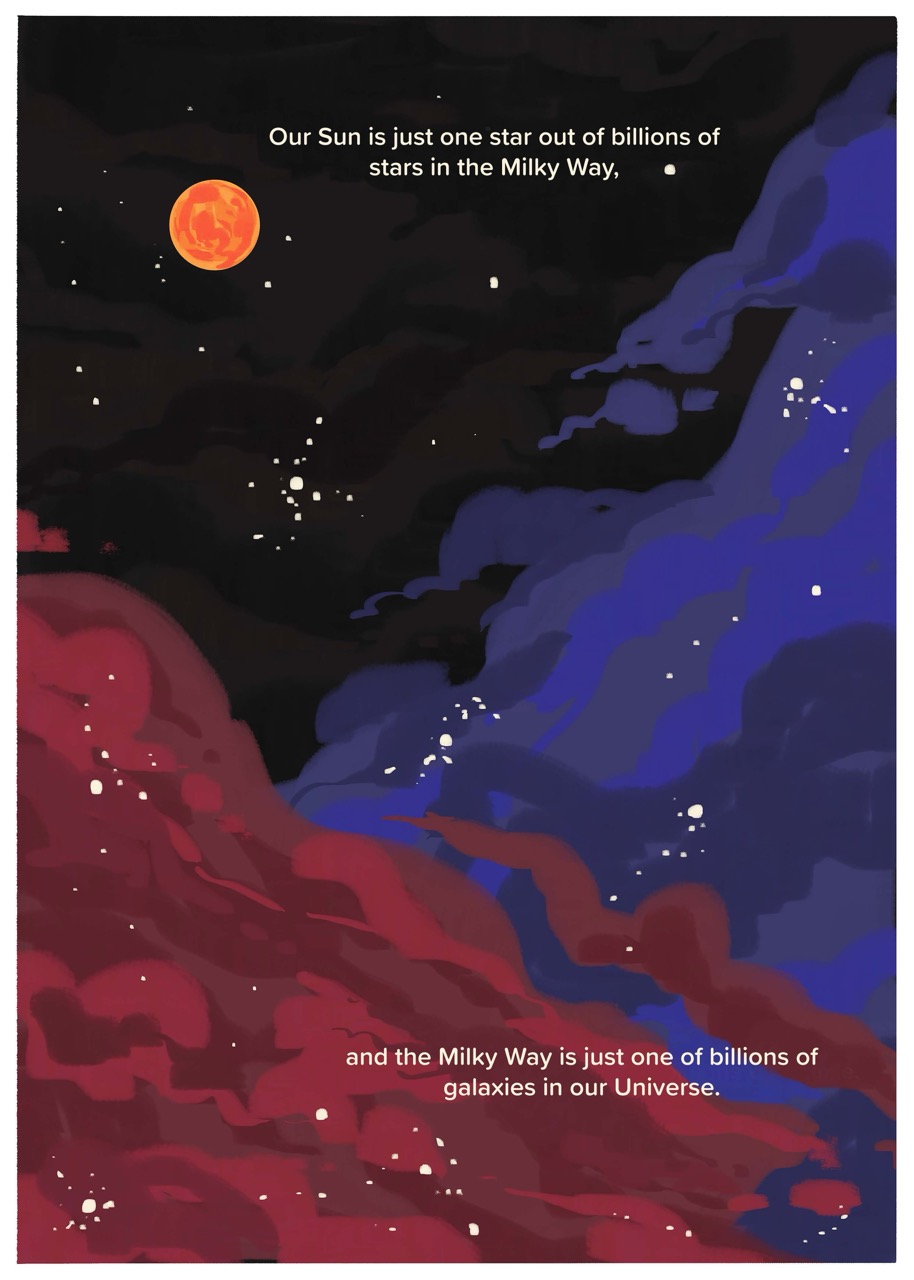
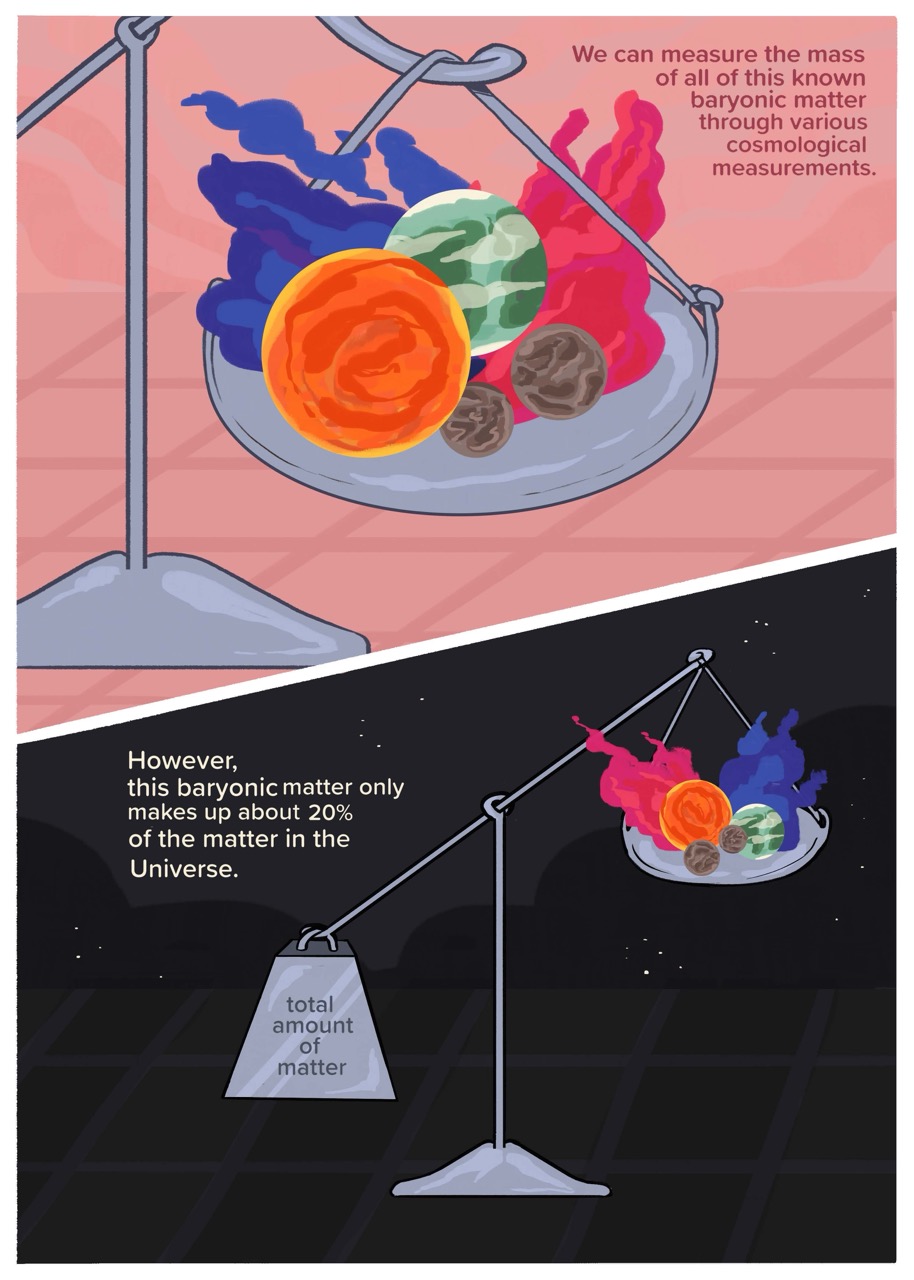
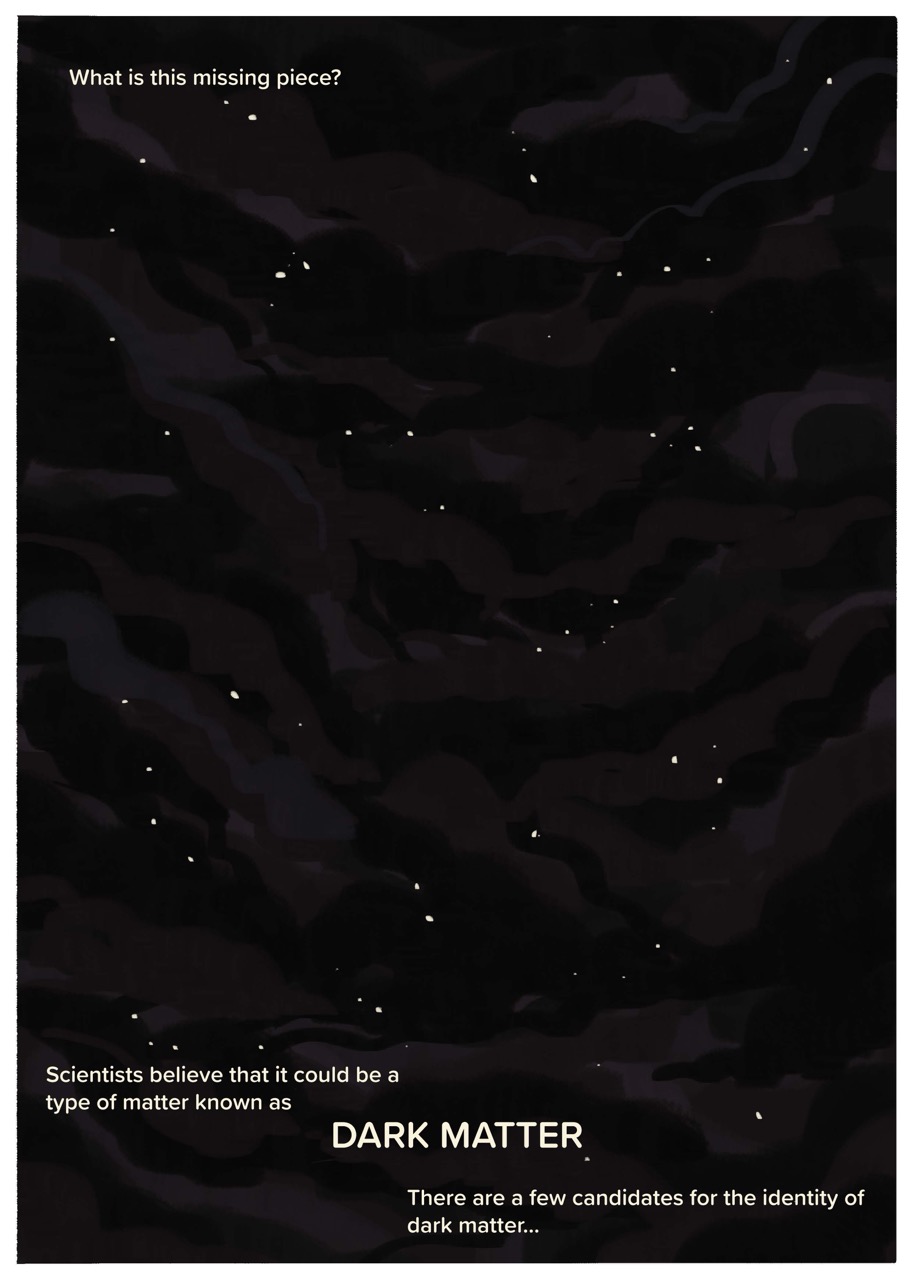
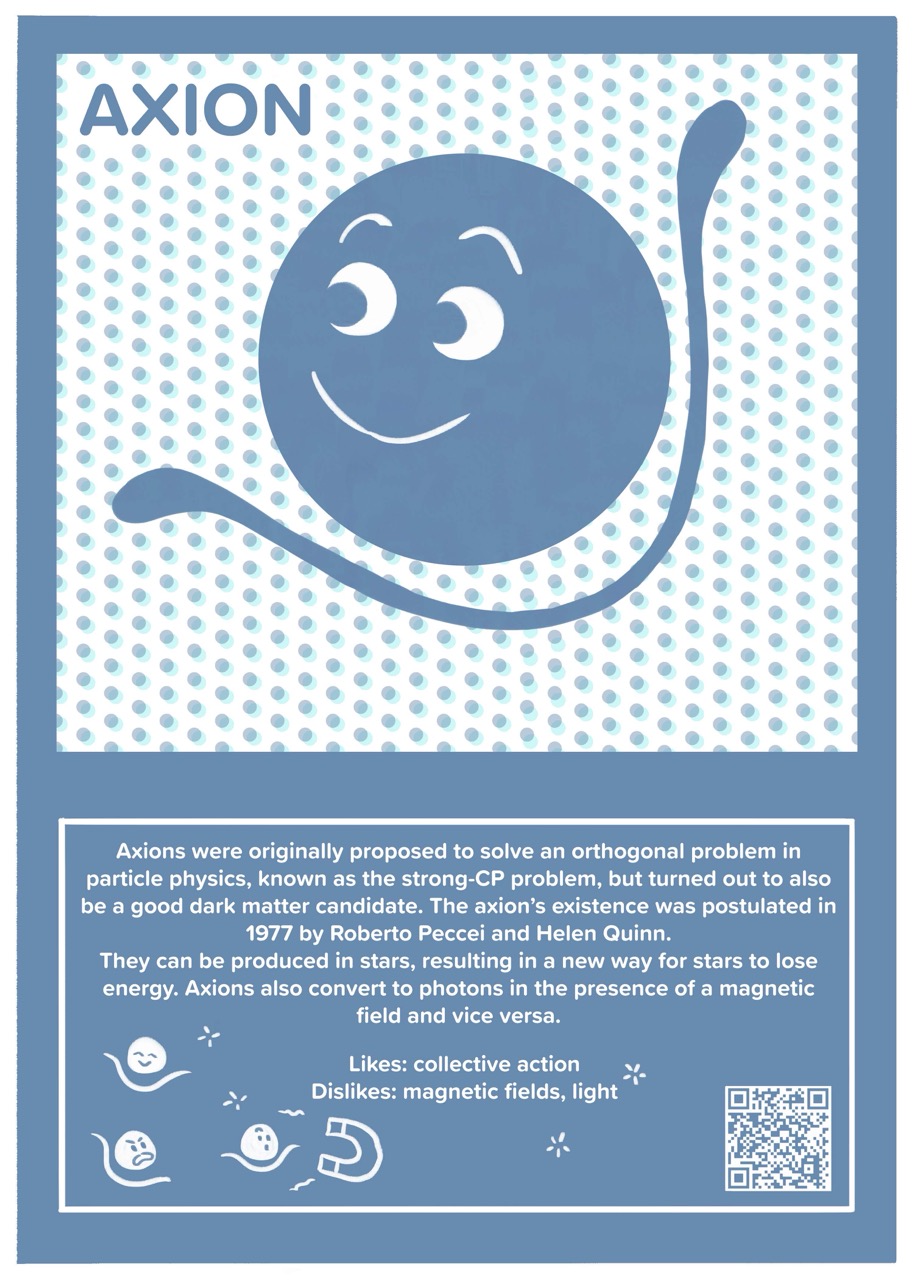
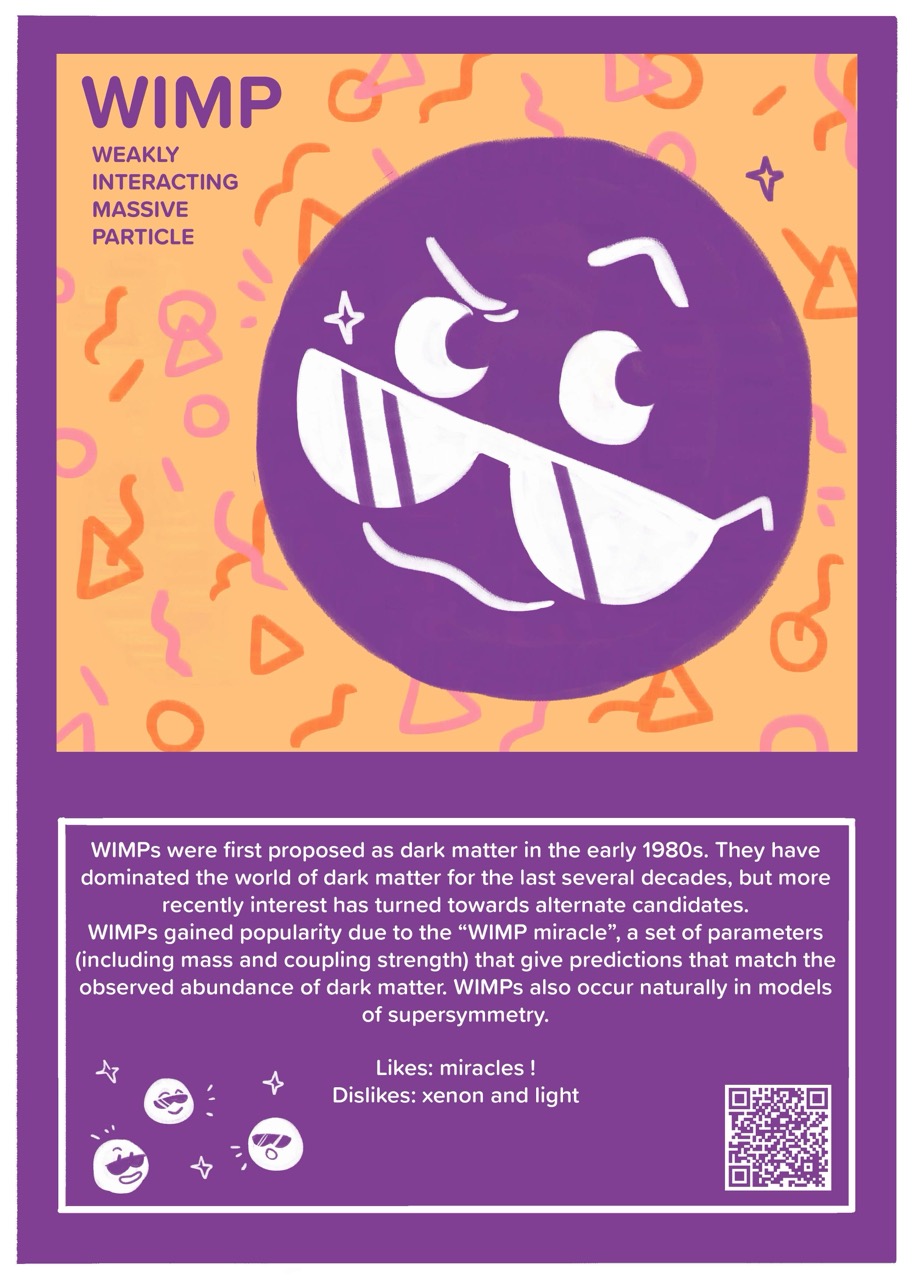
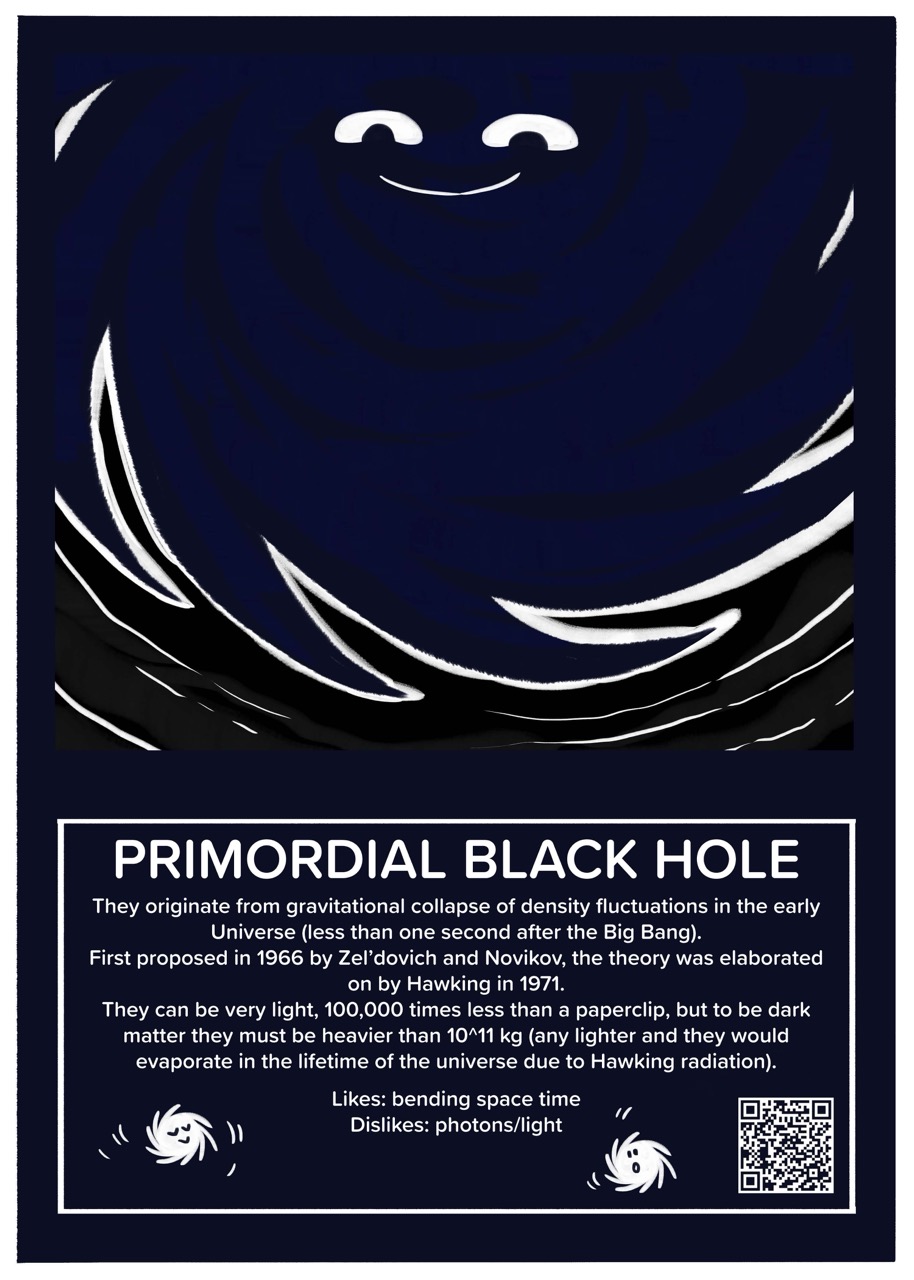

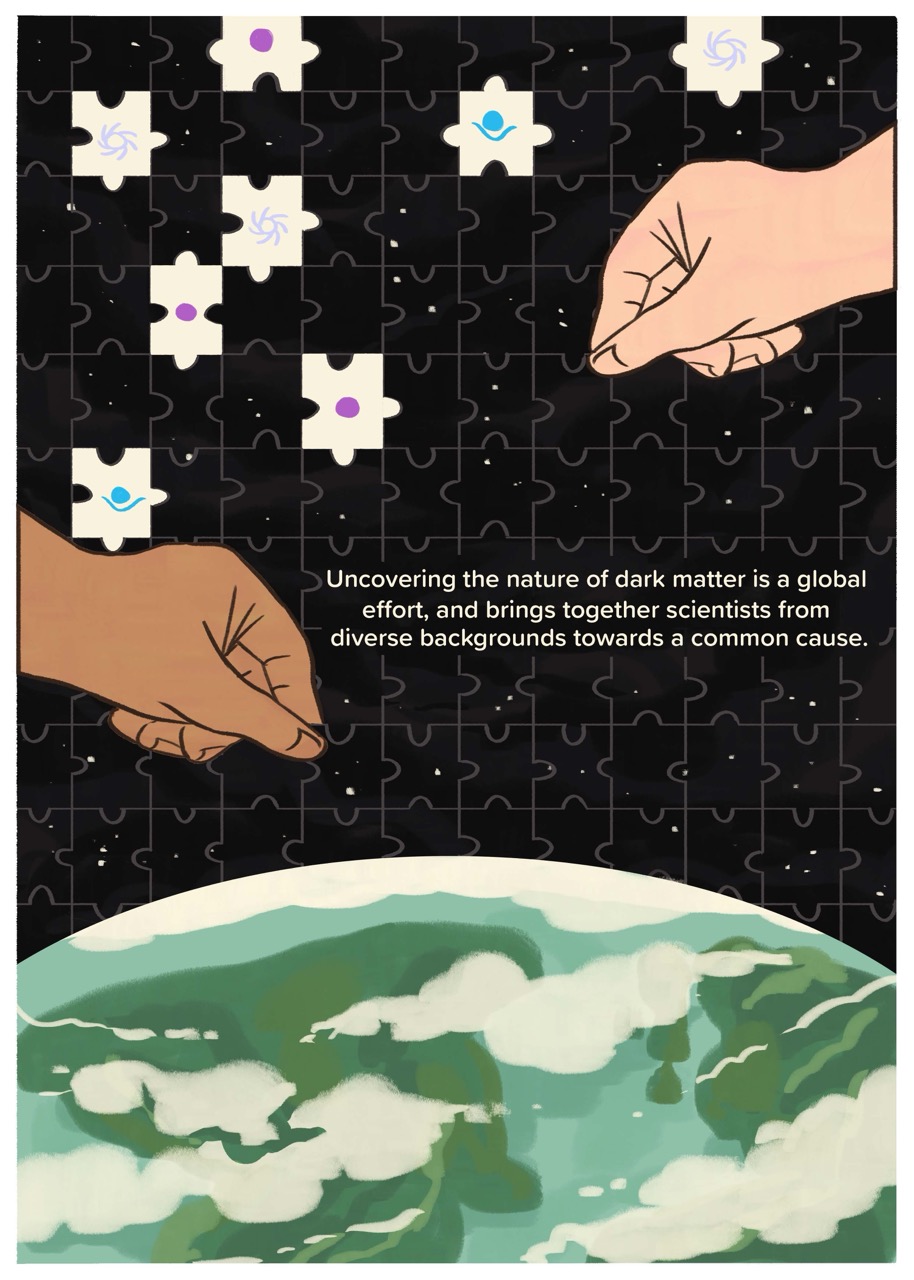

Transcript
Overview
A digitally drawn comic in a flat, clean, vector-like style. Most pages are divided into just a few panels, or are full page spreads, leaving lots of room for the text to breathe.
Cover
Getting to Know Dark Matter
Mary Hubbert
Tien-Tien Yu
The University of Oregon Science Comics Fellowship Program
Cover Description: A cartoon version of space, with a dark background and simple abstract versions of stars, along with symbols for axions, WIMPs, and primordial black holes.
Page 1
Panel 1: “Our Earth is made up of matter known as “baryonic matter”, such as protons, neutrons, and electrons.” A view of earth from space: a small green and blue planet covered in clouds and surrounded by stars.
Panel 2: “Our Sun and the other planets are also composed of baryons.” A fiery orange sun dominates the panel. Three small planets, including Earth, orbit around the Sun along their oblong orbital paths.
Page 2
“Our Sun is just one star out of billions of stars in the Milky Way, and the Milky Way is just one of billions of galaxies in our Universe.” A full page spread showing a space scape with the Sun, now small in the upper left-hand corner. The rest of the page is full of stars and large foggy blue and red nebulae.
Page 3
Panel 1: “We can measure the mass of all of this known baryonic matter through various cosmological measurements.” Several planets, a sun, and two nebulae are balanced on one side of an old-fashioned balancing scale. The panel is zoomed in on the side of the scales with the planets, so the other side is out of view.
Panel 2: “However, this baryonic matter only makes up about 20% of the matter in the Universe.” We zoom out on the view of the scale, so the entire scale is visible. The collection of planets and stars is elevated high above the other side which carries a weight labeled “total amount of matter,” demonstrating that the planets and stars are much lighter than the weight of the total matter in the universe.
Page 4
“What is this missing piece?”
“Scientists believe that it could be a type of matter known as Dark Matter [emphasis].”
“There are a few candidates for the identity of dark matter…”,
A full page spread showing the darkness of space with a few scattered stars and galaxies. The text is split up at the top and bottom of the page, emphasizing the vastness of space.
Page 5
“Axion” The page looks like a trading card, with an image of an axion on a half-tone background at the top of the page, and text describing an axion at the bottom of the page. The axion is a circle with a friendly smiling face looking towards the left. A bell-curve shaped line outlines the lower right side of the circle giving the impression that the circle has arms.
Description box: “Axions were originally proposed to solve an orthogonal problem in particle physics, known as the strong-CP problem, but turned out to also be a good dark matter candidate. The axion’s existence was postulated in 1977 by Roberto Peccei and Helen Quinn.”
“They can be produced in stars, resulting in a new way for stars to lose energy. Axions also convert to photons in the presence of a magnetic field and vice versa.”
“Likes: collective action”
“Dislikes: magnetic fields, light.”
Several small axions float at the bottom of the page. The axions are small circles with bell-curve shaped ‘arms’ and anthropomorphic faces. One looks content, one looks angry, one looks surprised as it floats near a magnet. A QR code points to a Quanta magazine article: Top Dark Matter Candidate Loses Ground to Tiniest Competitor.
Page 6
“WIMP: Weakly Interacting Massive Particle” Another trading card page. A large cartoon panel showing a WIMP particle represented as a circle with a skeptical smile with a raised eyebrow and sunglasses, against a background of 90s-inspired circles, triangles, and squiggles.
Description box: “WIMPs were first proposed as dark matter in the early 1980s. They have dominated the world of dark matter for the last several decades, but more recently interest has turned towards alternate candidates.
“WIMPs gained popularity due to the “WIMP miracle”, a set of parameters (including mass and coupling strength) that give predictions that match the observed abundance of dark matter. WIMPs also occur naturally in models of supersymmetry.”
“Likes: miracles !”
“Dislikes: xenon and light”
Three small WIMPs wearing dark shades float grinning next to the text. A QR code points to a Symmetry Magazine article: Miraculous WIMPs.
Page 7
Another trading card page. A large spiral of low-contrast dark black and dark blue space covers the page. Two eyes and a disembodied smile float at the top of the spiral.
Description box: “Primordial Black Hole”
“They originate from gravitational collapse of density fluctuations in the early Universe (less than one second after the Big Bang).”
“First proposed in 1966 be Zel’dovich and Novikov, the theory was elaborated on by Hawking in 1971.”
“They can be very light, 100,00 times less than a paperclip, but to be dark matter they must be heavier than 10^11kg (any lighter and they would evaporate in the lifetime of the universe due to Hawking radiation).”
“Likes: bending space time”
“Dislikes: photons/light”
Two spinning cartoon primordial black holes float around the text. A QR code points to Astronomy.com article: What are Primordial Black Holes?
Page 8
Panel 1: “Scientists can search for dark matter using large underground detectors,” Two scientists wearing lab coats look at a clipboard. Behind them are large screens and displays showing schematics and data.
Panel 2: “accelerators, colliders,” A cavernous room with a large particle accelerator. The accelerator is a large metal tube surrounded by metal panels and scaffolding. A few people observe the accelerator from the four stories of hallways and balconies surrounding the perimeter of the room.
Panel 3: “and telescopes.” A view of an observatory at night nestled in wooded hills. The observatory is a domed building with a satellite receiver on the roof and two small outbuildings next to it. The center of the domed roof is open, revealing a large telescope within the building.
Page 9
“Uncovering the nature of dark matter is a global effort, and brings together scientists form diverse backgrounds towards a common cause.”
A full page spread. At the bottom of the page, a third of Earth is visible (with the rest of the planet presumably off-page). Above Earth is space, full of stars, on top of which is superimposed a puzzle-piece pattern. Two large hands reach into space from off page and grasp individual starry puzzle pieces. Eight puzzle pieces scattered around the page are white instead of black. Some of the white pieces have a symbol for an axion, some have a WIMP symbol, and others have a primordial black hole symbol.
Page 10
“This collective work may one day teach us what makes up the majority of our Universe.” A full page spread with Earth centered within space. Space is peppered with stars and cartoon symbols of axions, WIMPs, and primordial black holes, along with a satellite.

